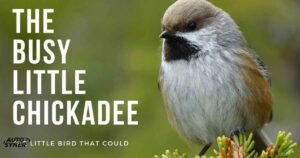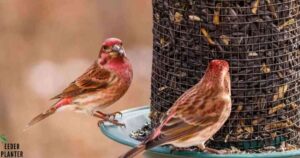Have you ever felt overwhelmed trying to identify the lively little birds flitting around your backyard? You’re not alone. Many bird enthusiasts struggle to distinguish between similar-looking species, especially when it comes to the charming chickadee bird. This confusion can lead to frustration and missed opportunities to fully appreciate these fascinating creatures.
But don’t worry! This comprehensive guide is here to solve your chickadee conundrum. We’ll explore the unique characteristics of each chickadee species, their behaviors, and habitats. By the end of this article, you’ll be able to confidently identify and enjoy these delightful backyard visitors. Let’s dive into the wonderful world of chickadees!
Chickadee Birds
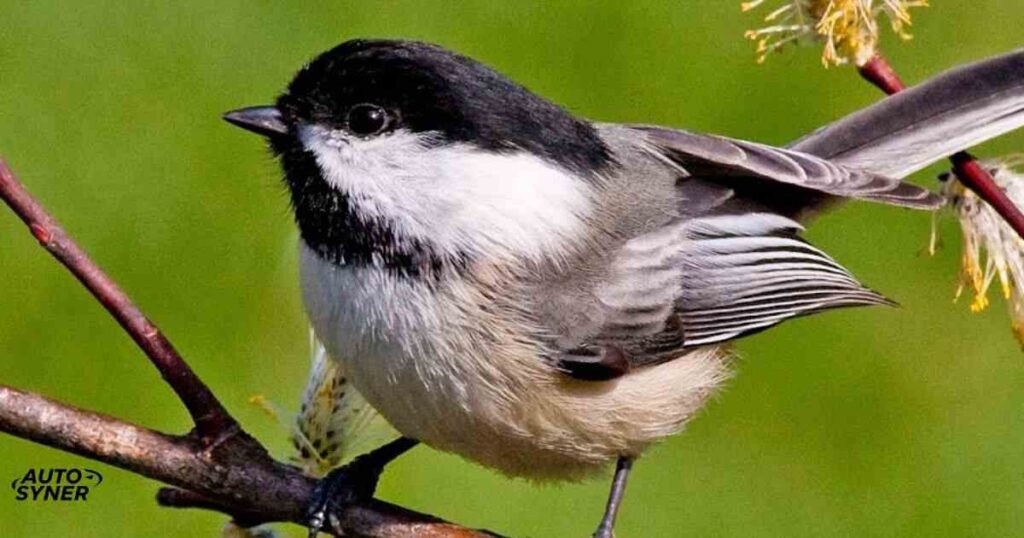
Chickadee birds are among the most beloved backyard birds in North America. These small, acrobatic songsters belong to the genus Poecile and are part of the larger family Paridae. Known for their distinctive “chick-a-dee-dee-dee” call, these birds have captured the hearts of bird enthusiasts across the continent.
Chickadees are more than just cute faces in the bird world. They play crucial roles in their ecosystems, helping to control insect populations and disperse seeds. Their adaptability to various habitats, from dense forests to suburban backyards, makes them excellent subjects for both casual birdwatchers and serious ornithologists alike.
What Makes Chickadee Birds Unique?
Chickadee birds stand out in the avian world for several reasons. First, their small size – typically 4-6 inches long – belies their big personalities. They’re known for their boldness, often being the first to investigate new feeders or even eat from a person’s hand.
Their distinctive black cap and bib, contrasted with white cheeks, make them easy to spot. But it’s their acrobatic abilities that truly set them apart. Chickadees can hang upside down from branches and feeders, showcasing their agility as they forage for food.
The Chickadee’s Place in North American Ecosystems
In North American ecosystems, chickadee birds serve as important indicator species. Their presence or absence can signal the health of an environment. As primarily insectivorous birds, they help control pest populations, benefiting both forests and gardens.
Chickadees also play a role in seed dispersal. When caching seeds for winter, they inadvertently plant some, contributing to forest regeneration. Their complex social structures and vocalizations make them fascinating subjects for studying avian communication and intelligence.
Types of Chickadees in North America
North America is home to seven distinct chickadee species, each adapted to specific regions and habitats. From the widespread black-capped chickadee to the rare gray-headed chickadee, each species has its own unique characteristics and charm.
Understanding the differences between these species can enhance your birdwatching experience and contribute to citizen science efforts. Let’s explore each of these fascinating chickadee varieties in detail.
Black-Capped Chickadee: The Iconic Songster
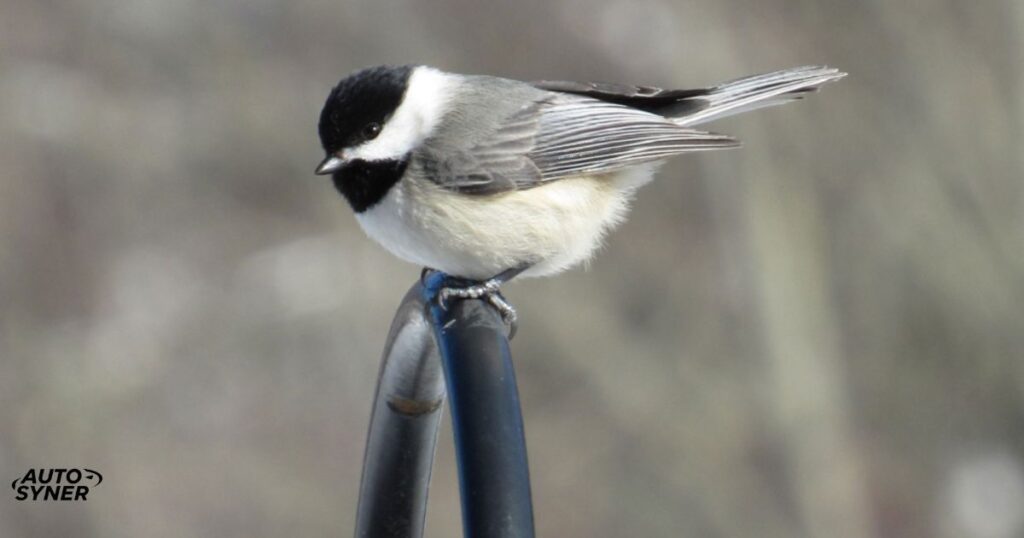
The black-capped chickadee (Poecile atricapillus) is perhaps the most recognizable of all chickadee species. Found across much of northern North America, from Alaska to Newfoundland and south to the northern United States, this bird is a year-round resident in most of its range.
Identifiable by its black cap and bib, white cheeks, and gray back, the black-capped chickadee is a frequent visitor to backyard feeders. Its cheerful “chick-a-dee-dee-dee” call is a familiar sound in forests and gardens alike.
Carolina Chickadee: The Southern Charmer
The Carolina chickadee (Poecile carolinensis) is often mistaken for its black-capped cousin. However, this species is found in the southeastern United States, from New Jersey to Texas. It prefers deciduous and mixed forests but adapts well to suburban areas.
Slightly smaller than the black-capped chickadee, the Carolina chickadee has a more compact appearance. Its song is typically faster and higher-pitched, providing a clue for birdwatchers trying to distinguish between the two species.
Mountain Chickadee: The High-Altitude Specialist
As its name suggests, the mountain chickadee (Poecile gambeli) is found in the mountainous regions of western North America. This species is easily identifiable by the white stripe above its eye, which breaks up its black cap.
Adapted to life in coniferous forests at high elevations, mountain chickadees are hardy birds that can survive in harsh alpine conditions. Their call is similar to other chickadees but often described as having a slightly hoarse quality.
Chestnut-Backed Chickadee: The Colorful Coastal Dweller
The chestnut-backed chickadee (Poecile rufescens) stands out with its rich brown back and flanks. Found along the Pacific coast from Alaska to California, this species prefers coniferous forests but can also be found in mixed woodlands.
These chickadees are smaller than their black-capped relatives and have a more limited range. Their call is higher-pitched and faster than other chickadee species, reflecting their energetic nature.
Boreal Chickadee: The Northern Forest Resident
The boreal chickadee (Poecile hudsonicus) is a specialist of the northern coniferous forests. With its brown cap and chestnut-colored sides, this species is well-camouflaged in its preferred habitat of spruce and fir forests.
Adapted to cold climates, boreal chickadees have thicker plumage than other chickadee species. Their call is more nasal and drawn-out compared to their southern relatives, a unique sound in the quiet boreal forests.
Mexican Chickadee: The Border-Crossing Species
The Mexican chickadee (Poecile sclateri) has a limited range in the United States, found only in the Chiricahua and Animas Mountains of Arizona and New Mexico. However, it’s more widespread in Mexico, hence its name.
This species resembles the black-capped chickadee but has a longer tail and a larger white patch on its nape. Its call is described as harsher and more metallic than other chickadee species.
Gray-Headed Chickadee: The Rare Arctic Visitor
The gray-headed chickadee (Poecile cinctus) is the rarest chickadee species in North America. Found primarily in Alaska and parts of Canada, this bird is more common in northern Europe and Asia, where it’s known as the Siberian tit.
With its distinctive gray head and brown back, this species is well-adapted to life in the harsh Arctic and subarctic regions. Its call is similar to other chickadees but with a slightly different cadence.
The Fascinating Behavior of Chickadee Birds
Chickadee birds are known for their complex social behaviors and impressive cognitive abilities. These small birds exhibit a range of fascinating behaviors that have made them popular subjects for scientific study and birdwatching alike.
From their intricate vocalizations to their acrobatic foraging techniques, chickadees never fail to entertain and intrigue observers. Let’s delve deeper into some of the most interesting aspects of chickadee behavior.
Chickadee Song: More Than Just “Chick-a-dee-dee-dee”
While the chickadee bird song that gives these birds their name is their most famous vocalization, it’s far from their only one. Chickadees have a complex system of calls and songs that they use to communicate different messages.
The “chick-a-dee” call, for instance, is used as an alarm call. Research has shown that chickadees add more “dee” notes to the end of the call when they perceive a greater threat. They also have a high, whistled song used primarily in breeding season, as well as various chips, gargles, and other vocalizations used in different social contexts.
The Acrobatic Feats of Chickadees
One of the most delightful aspects of watching chickadee birds is observing their acrobatic prowess. These small birds are incredibly agile, able to hang upside down from branches and feeders as they forage for food.
Chickadees use their strong feet and sharp claws to grip onto surfaces in any orientation. This ability allows them to access food sources that many other birds can’t reach, giving them an advantage in their forest habitats.
Chickadee Diet and Feeding Habits
The diet of chickadee birds is diverse and adaptable, changing with the seasons to take advantage of available food sources. Understanding what chickadees eat can help you attract these charming birds to your backyard and support their populations in the wild.
Chickadees are opportunistic feeders, consuming a wide variety of foods depending on availability. Their feeding habits also play a crucial role in their ecosystems, influencing insect populations and seed dispersal.
What Do Chickadees Eat in the Wild?
In the wild, chickadee birds primarily feed on insects and spiders during the breeding season. They are particularly fond of caterpillars, which provide essential protein for growing chicks. As skilled foragers, chickadees can find insect eggs and larvae hidden in bark crevices or rolled-up leaves.
During fall and winter, when insects are scarce, chickadees shift their diet to include more seeds and berries. They have a particular fondness for sunflower seeds, which provide the high-fat content needed to survive cold winters. Chickadees are also known to eat tree sap, small fruits, and even scavenge from animal carcasses when other food is scarce.
Feeding Chickadees in Your Backyard
Attracting chickadees to your backyard can be a rewarding experience for any bird enthusiast. These friendly birds readily visit feeders, especially during the winter months when natural food sources are limited.
To attract chickadees, offer a variety of foods in your backyard bird feeders. Black oil sunflower seeds are a favorite, but chickadees also enjoy peanuts, suet, and nyjer seeds. Providing a diverse menu will not only attract more chickadees but also support their nutritional needs throughout the year.
Chickadee Nesting and Reproduction
Understanding the chickadee nesting habits can provide fascinating insights into the life cycle of these charming birds. Chickadees are cavity nesters, meaning they build their nests inside holes in trees or artificial nest boxes.
The nesting season for chickadees typically begins in late winter or early spring, depending on the species and location. Both male and female chickadees participate in nest building and care for the young, showcasing their strong pair bonds.
Where Do Chickadees Nest?
In the wild, chickadees prefer to nest in natural tree cavities or abandoned woodpecker holes. They typically choose cavities that are 5-15 feet off the ground, although the height can vary. When natural cavities are scarce, chickadees may excavate their own nests in rotting wood.
Many chickadee species readily accept artificial nest boxes, making them popular among backyard birdwatchers. To attract nesting chickadees, provide a small nest box with an entrance hole about 1 1/8 inches in diameter. Place the box 5-15 feet high in a quiet area of your yard, preferably near some tree cover.
Read This Blog: The Ultimate Guide: How to Germinate Pot Seeds Successfully in 2024
The Chickadee Family Life
Chickadee pairs typically stay together for life, reinforcing their bond through shared activities like feeding and nest building. The female usually lays 6-8 small, white eggs speckled with reddish-brown markings. She incubates the eggs alone for about two weeks while the male brings her food.
Once the eggs hatch, both parents work tirelessly to feed the chicks. Young chickadees grow quickly, leaving the nest about 16-18 days after hatching. The parents continue to feed and care for the fledglings for several weeks after they leave the nest, teaching them essential survival skills.
Chickadee Migration and Seasonal Movements
Unlike many bird species, most chickadee birds do not undertake long-distance migrations. Instead, they are considered resident birds, typically staying within their breeding range year-round. However, this doesn’t mean chickadees are entirely sedentary.
Understanding the seasonal movements of chickadees can provide insights into their adaptability and survival strategies. It also helps birdwatchers know when and where they’re most likely to spot these charming birds.
Do Chickadees Migrate?
While true long-distance chickadee migration is rare, some populations do exhibit seasonal movements. These movements are typically short-distance and often altitudinal rather than latitudinal. For example, mountain chickadees may move to lower elevations during harsh winters.
Some northern populations of black-capped and boreal chickadees exhibit irregular irruptive movements in years when food is scarce. During these irruptions, large numbers of chickadees may move south of their usual range, providing exciting opportunities for birdwatchers in more southern areas.
Chickadee Winter Survival Strategies
Chickadees have developed remarkable adaptations for winter bird survival. One of their most impressive abilities is entering a state of regulated hypothermia on cold nights, lowering their body temperature to conserve energy.
Also Read This Blog: What Birds Eat Safflower Seeds: A Birdwatcher’s Guide to This Nutritious Treat
Food caching is another crucial survival strategy. Chickadees have excellent spatial memory, allowing them to remember the locations of thousands of food items they’ve hidden throughout their territory. This cached food becomes a vital resource during harsh winter conditions when other food sources are scarce.
Chickadees and Human Interaction
Chickadee birds have a special place in human culture, often seen as friendly and approachable backyard visitors. Their adaptability to human-altered environments has made them one of the most commonly observed birds in many parts of North America.
Understanding the relationship between chickadees and humans can help us better appreciate these birds and take steps to protect them. It also highlights the importance of responsible birdwatching and feeding practices.
Chickadees as Backyard Favorites
Chickadees are often among the first birds to discover and use new feeders, earning them a reputation as “brave” or curious birds. Their willingness to feed close to humans makes them popular subjects for backyard bird watching.
To attract chickadees to your yard, provide a variety of food sources, including sunflower seeds, peanuts, and suet. Offering natural food sources like native plants that produce berries or seeds can also help support chickadee populations year-round.
Conservation Status and Challenges Facing Chickadees
While most chickadee species are currently listed as species of least concern, they face various challenges in our changing world. Habitat loss due to deforestation and urban development is a significant threat to many chickadee populations.
Climate change also poses a risk, particularly to species with limited ranges or specific habitat requirements. For example, the boreal chickadee may face challenges as warming temperatures alter its preferred coniferous forest habitat.
Frequently Asked Question
How long do chickadees live?
Chickadees typically live 2-3 years in the wild, although some individuals have been known to survive for up to 12 years.
Can chickadees be kept as pets?
No, it’s illegal to keep native wild birds as pets in the United States, including chickadees.
How can I tell the difference between chickadee species?
Look for specific field marks like the white eyebrow of the mountain chickadee or the brown cap of the boreal chickadee. Range and habitat can also provide clues.
Do chickadees return to the same nest each year?
Chickadees typically build new nests each year, but they may reuse the same cavity or area if it was successful in previous years.
What predators do chickadees have?
Chickadees face threats from various predators, including hawks, owls, cats, and small mammals like weasels and squirrels.
Conclusion
As we flutter to the end of our chickadee adventure, let’s take a moment to ruffle our feathers and reflect. These pint-sized powerhouses of the bird world have shown us that big personalities come in small packages. From their acrobatic antics to their clever survival strategies, chickadees are nature’s little marvels.
So next time you’re out and about, keep your ears perked for that familiar “chick-a-dee-dee-dee.” Who knows? You might just spot one of these feathered acrobats doing a trapeze act at your local bird feeder. Remember, in the grand theater of nature, chickadees are the star performers, always ready to put on a show.
Now go forth, bird enthusiasts! Armed with your new chickadee knowledge, you’re ready to become the Sherlock Holmes of the backyard bird world. Happy birding!

I am Alexander James, a seasoned professional with 4 years of expertise, brings passion and skill to every project. Elevate your experience with my knowledge and creativity.
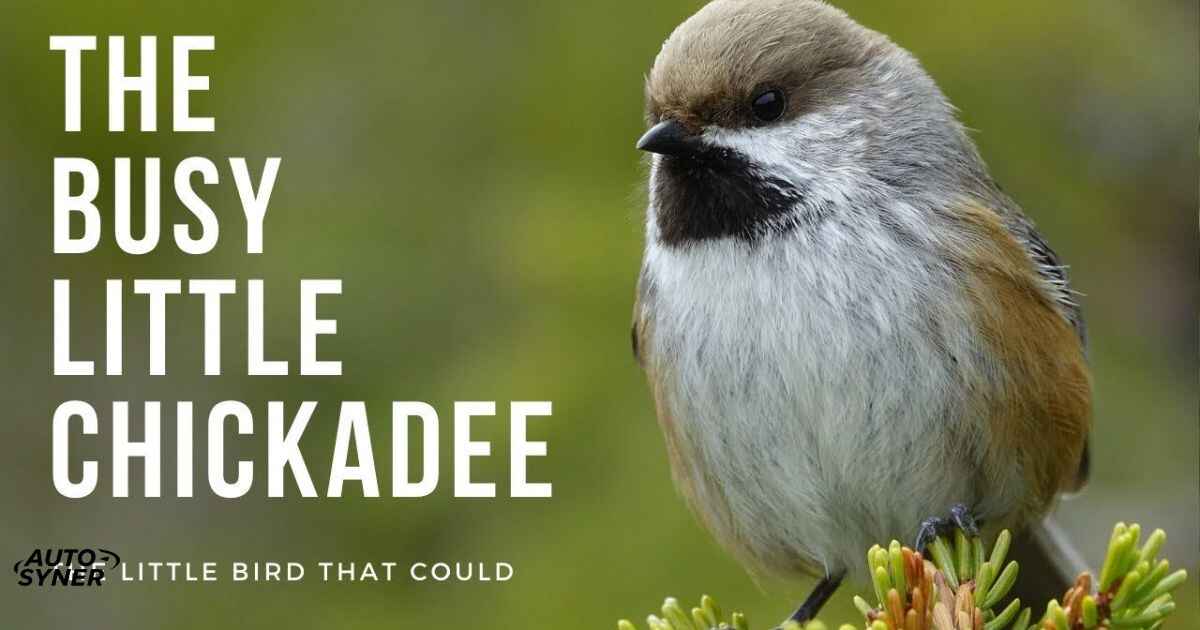


![Hollyhock Seeds: The Complete Guide to Success [2024]](https://seederabout.com/wp-content/uploads/2024/10/Hollyhock-Seeds-The-Complete-Guide-to-Success-2024-300x157.jpg)
